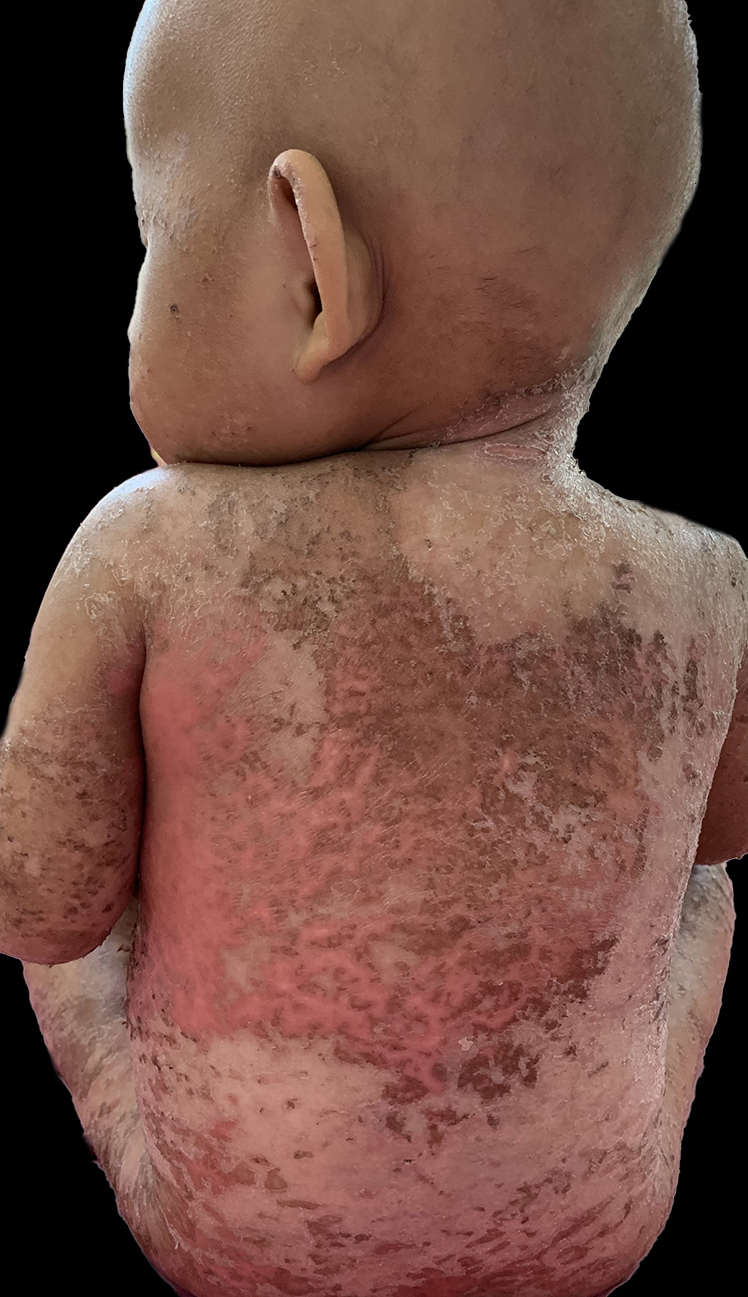Importance of skin lesions in diagnosing kwashiorkor.

Downloads
DOI:
https://doi.org/10.26326/2281-9649.35.2.2745How to Cite
Abstract
Kwashiorkor is a form of severe acute malnutrition caused by extreme protein deficiency, often underdiagnosed since it is characterized by edema, which masks the decrease of muscle mass. Dermatologic manifestation can present as a diagnostic clue for kwashiorkor. This report discusses the case of a 15-month-old girl with desquamated skin and swelling over a large area of her body. She had a history of poor diet with low protein intake, was irritable, underweight, severely stunted, and had generalized pitting edema. Dermatological findings were dry skin and hyperpigmented lesions with erythema in the area where the skin had desquamated, leaving hypopigmented lesions with white-brownish scales over them in an irregular pattern, resembling flaky paint dermatosis. The hair appeared thin and dull, and angular cheilitis was present. Treatment involved therapeutic feeding with WHO formula (F-75 and F-100), antibiotics, and micronutrient supplements. Moisturizer with zinc oxide and vaseline were used to maintain the skin barrier, resulting in improved skin lesions within 7 days. This case report highlights the cutaneous manifestations as a clinical clue to diagnose kwashiorkor and its management.
